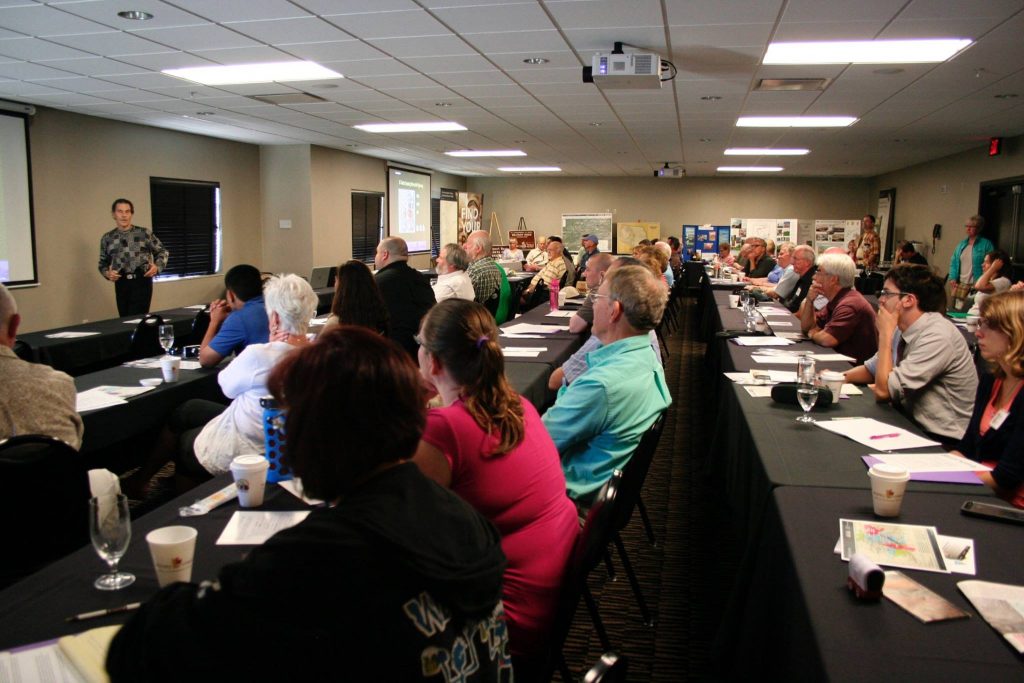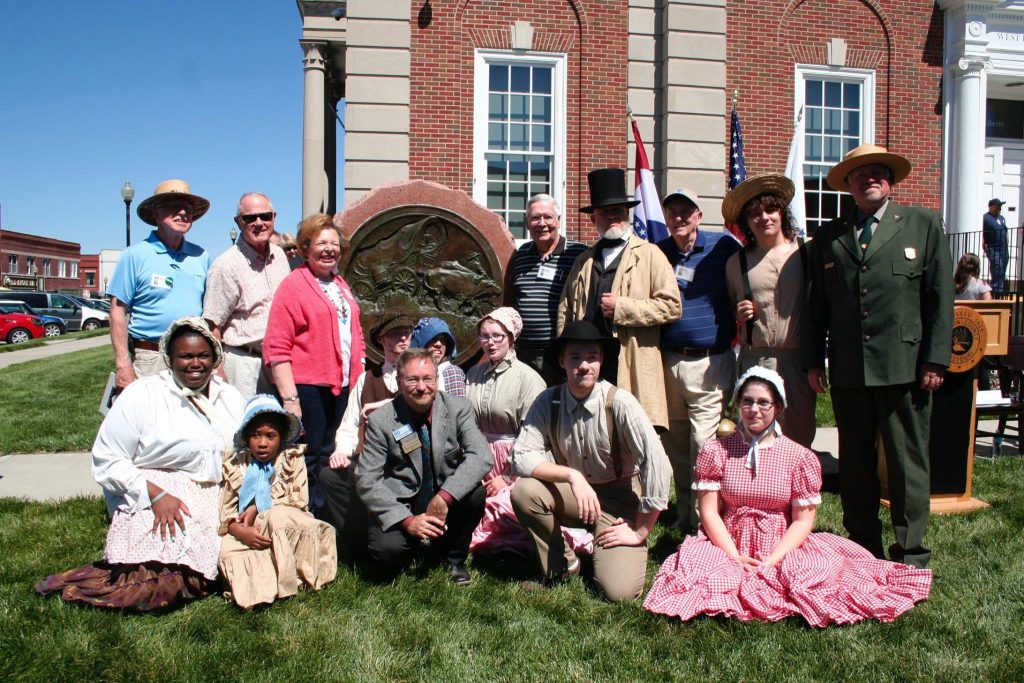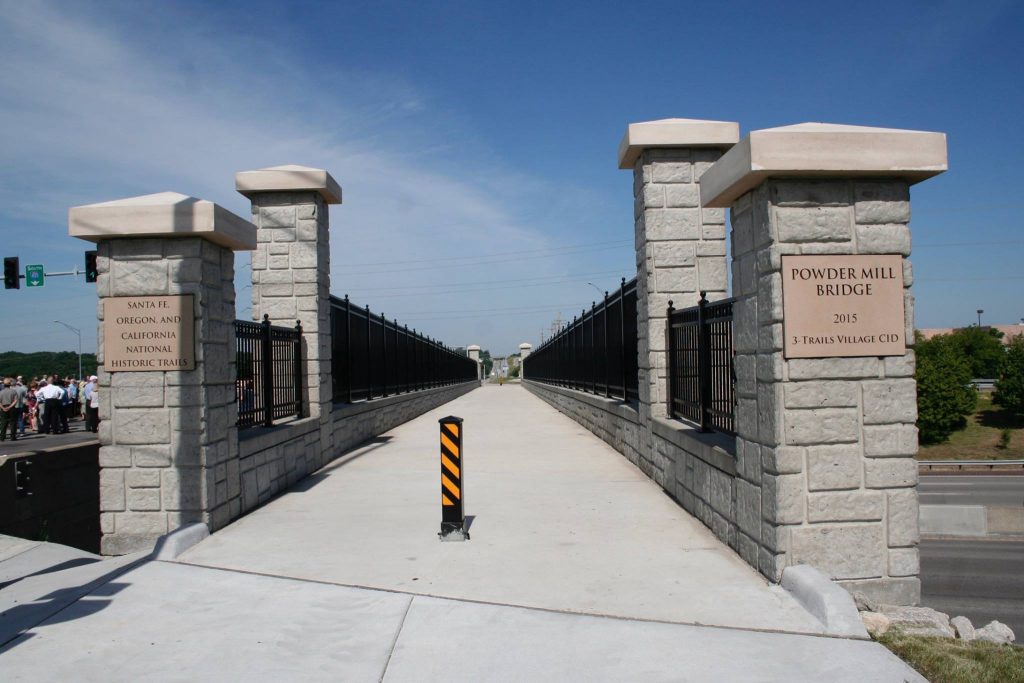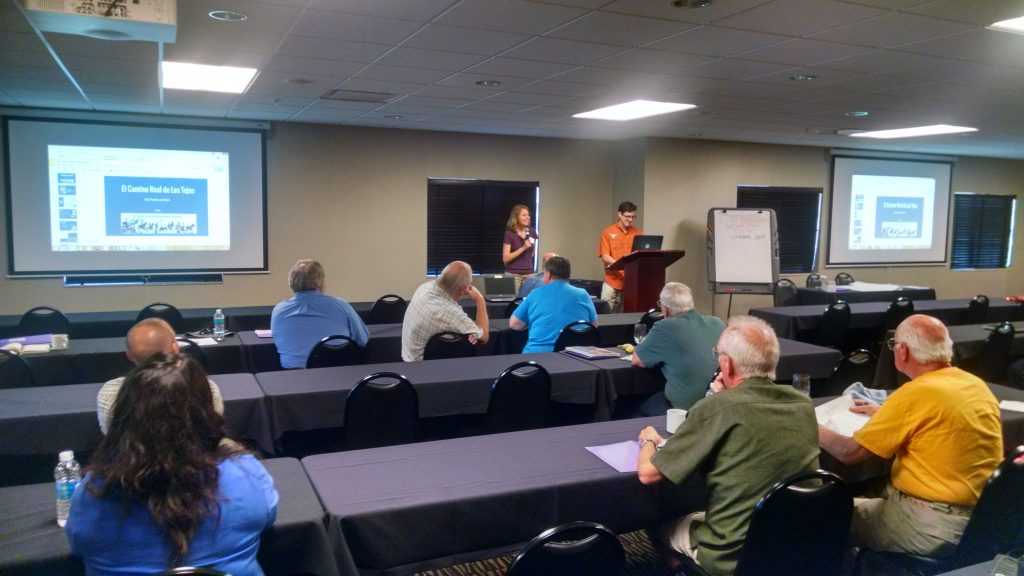An Overview
From June 6th-9th, national historic trail non-profit and agency partners came together in Independence, MO for the 2016 National Historic Trails Workshop.
During this time, it became apparent to me that national historic trail partners face numerous challenges. Though each trail is unique, many of these issues are identical. The beauty of this year’s National Historic Trails Workshop in Independence was that people from across the country got to present solutions to common issues for other trails to implement while collaborating with fellow trail partners to find solutions. The workshop included presentations, trainings, and mobile workshops.
 Above: Attendees listen to Lou Austin talk about the work being done with National Historic Trails in the Kansas City area
Above: Attendees listen to Lou Austin talk about the work being done with National Historic Trails in the Kansas City area
As a Trail Apprentice attending the workshop on a scholarship, I got to see the presentations with a unique view as someone who has not been in this field of work for very long.
The workshop provided training by seasoned individuals, including a session on how to solidify governing boards and fundraising for nonprofits from featured speaker, Carol Weisman.
All sessions provided valuable information and an awareness of what organizations are doing to provide perspective. Each trail possesses its own unique geographic challenges which makes it important to be exposed to other trails around the country. This workshop provided an opportunity to discover new and innovative methods to implement along the various trails.
 Above: National Historic Trail partners and reenactors pose for a picture with the newly dedicated Avard Farbanks bronze medallion
Above: National Historic Trail partners and reenactors pose for a picture with the newly dedicated Avard Farbanks bronze medallion
There is nothing better than a firsthand experience. This was the purpose of the mobile workshops, which were interspersed with the presentations.
The importance of the work of the Oregon-California and Santa Fe Trail Associations became increasingly visible when I got to see the way it merged and interacted with the surrounding communities that the trails pass through. It is far easier to understand the significance of places like the Powder Mill Bridge when you can safely walk across the highway without having to dodge traffic. Places where the trails interact with urban communities help the community to notice and recognize their historic significance.

Above: A view of the Powder Mill Bridge
Taking it Home
After leaving the workshop, there were tons of exciting new ideas to implement for my trail, El Camino Real de los Tejas, for which I am a GIS intern.

Above: Monica Bradford and Daniel Quintanilla give a presentation on their work with the El Camino Real de los Tejas National Historic Trail Association
Our association is working with the Girls Scouts to create a program to reach out to youth, we are considering implementing a leadership council to the board to incorporate the view of young adults, and we have exciting ideas about creating a cycle tour route and iron silhouettes along some of the major highways that the trail converges with.
All of these ideas were prompted by attending the workshop. We now are aware of models we can follow by other trails across the United States should we need guidance and extra resources to make our visions come true.
Author: Monica Bradford—Partnership for the National Trails System Trail Apprentice, El Camino Real de los Tejas National Historic Trail Association Intern
The PNTS would like to extend a special thank you to our host organizations and sponsors who made this year’s workshop possible.